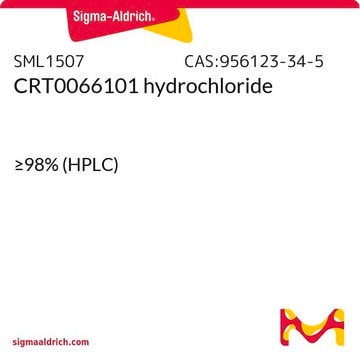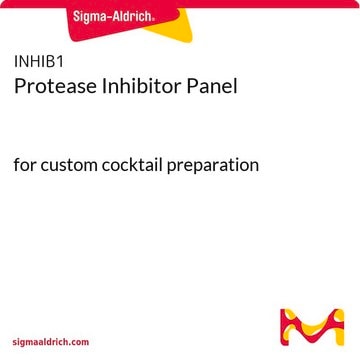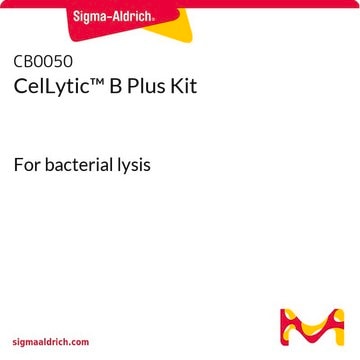P8849
Protease Inhibitor Cocktail
DMSO solution, for the inhibition of serine, cysteine, aspartic, aminopeptidases and thermolysin-like activities, for use in purification of Histidine-tagged proteins, DMSO solution
Sinónimos:
Protease inhibitor solution
About This Item
Productos recomendados
product name
Cóctel de inhibidores de proteasas, for use in purification of Histidine-tagged proteins, DMSO solution
biological source
synthetic
Quality Level
form
DMSO solution
storage temp.
−20°C
¿Está buscando productos similares? Visita Guía de comparación de productos
General description
The cocktail contains a mixture of inhibitors that specifically target serine, cysteine, aspartic, and thermolysin-like proteases, and aminopeptidases.
Specificity
Application
It is recommended for inhibition of protease activity in 100 mL of cell lysate from 20 g of Escherichia coli or 10 g of baculovirus-infected Spodoptera frugiperda pupal ovary cells.
Features and Benefits
Targets multiple types of proteases, ensuring comprehensive inhibition of protease activity.
Compatibility with IMAC applications due to omission of chelating agents.
Supplied in convenient packaging options.
Components
Bestatin
E-64
Pepstatin A
Phosphoramidon
Quantity
This protease inhibitor cocktail has been optimized and tested for histidine-tagged proteins
Preparation Note
related product
Storage Class
10 - Combustible liquids
wgk_germany
WGK 1
flash_point_f
185.0 °F - closed cup
flash_point_c
85 °C - closed cup
Certificados de análisis (COA)
Busque Certificados de análisis (COA) introduciendo el número de lote del producto. Los números de lote se encuentran en la etiqueta del producto después de las palabras «Lot» o «Batch»
¿Ya tiene este producto?
Encuentre la documentación para los productos que ha comprado recientemente en la Biblioteca de documentos.
Los clientes también vieron
Contenido relacionado
Select different protease inhibitor types based on your needs to prevent protein degradation during isolation and characterization and safeguard proteins in sample prep.
Nuestro equipo de científicos tiene experiencia en todas las áreas de investigación: Ciencias de la vida, Ciencia de los materiales, Síntesis química, Cromatografía, Analítica y muchas otras.
Póngase en contacto con el Servicio técnico














